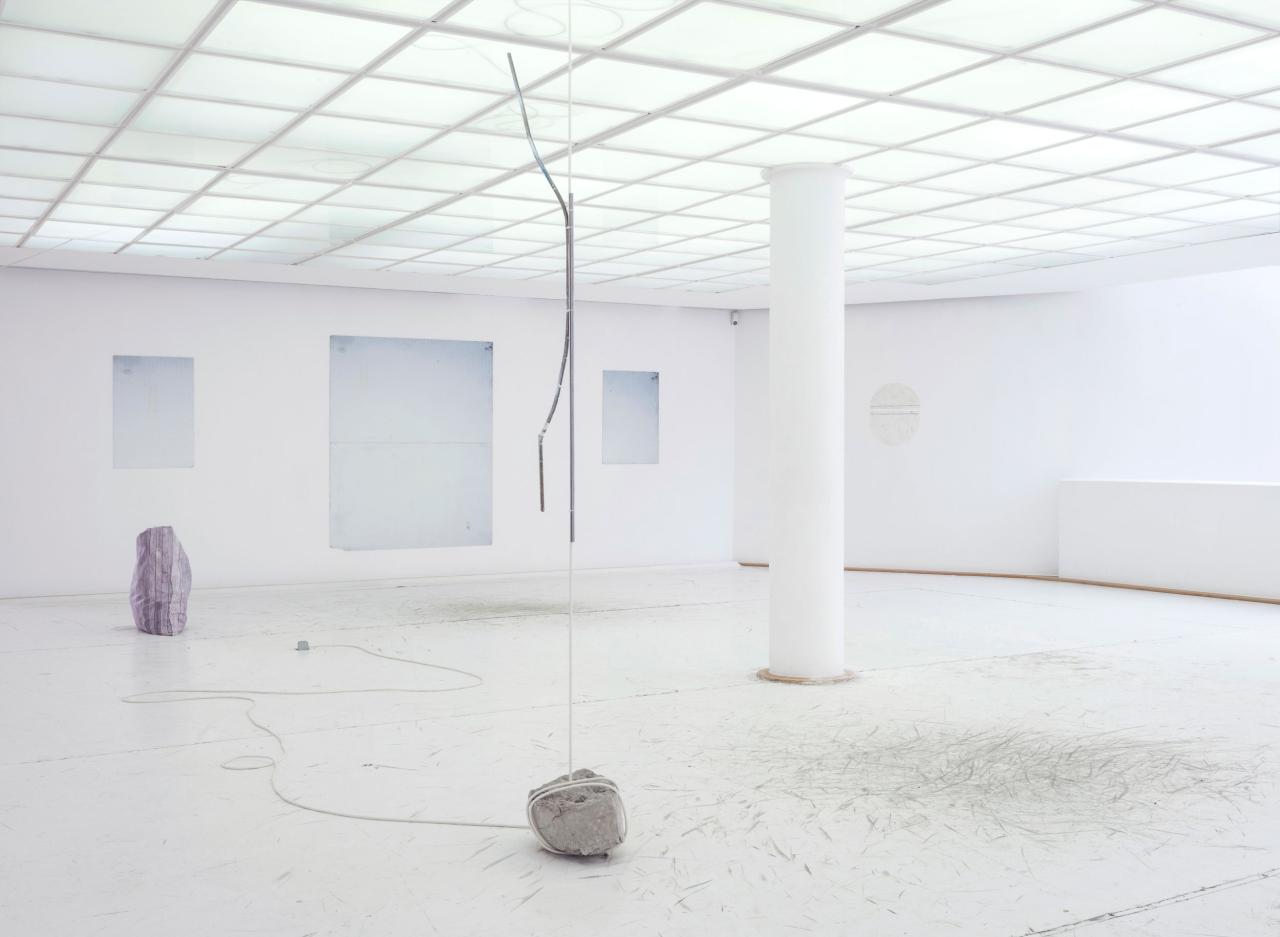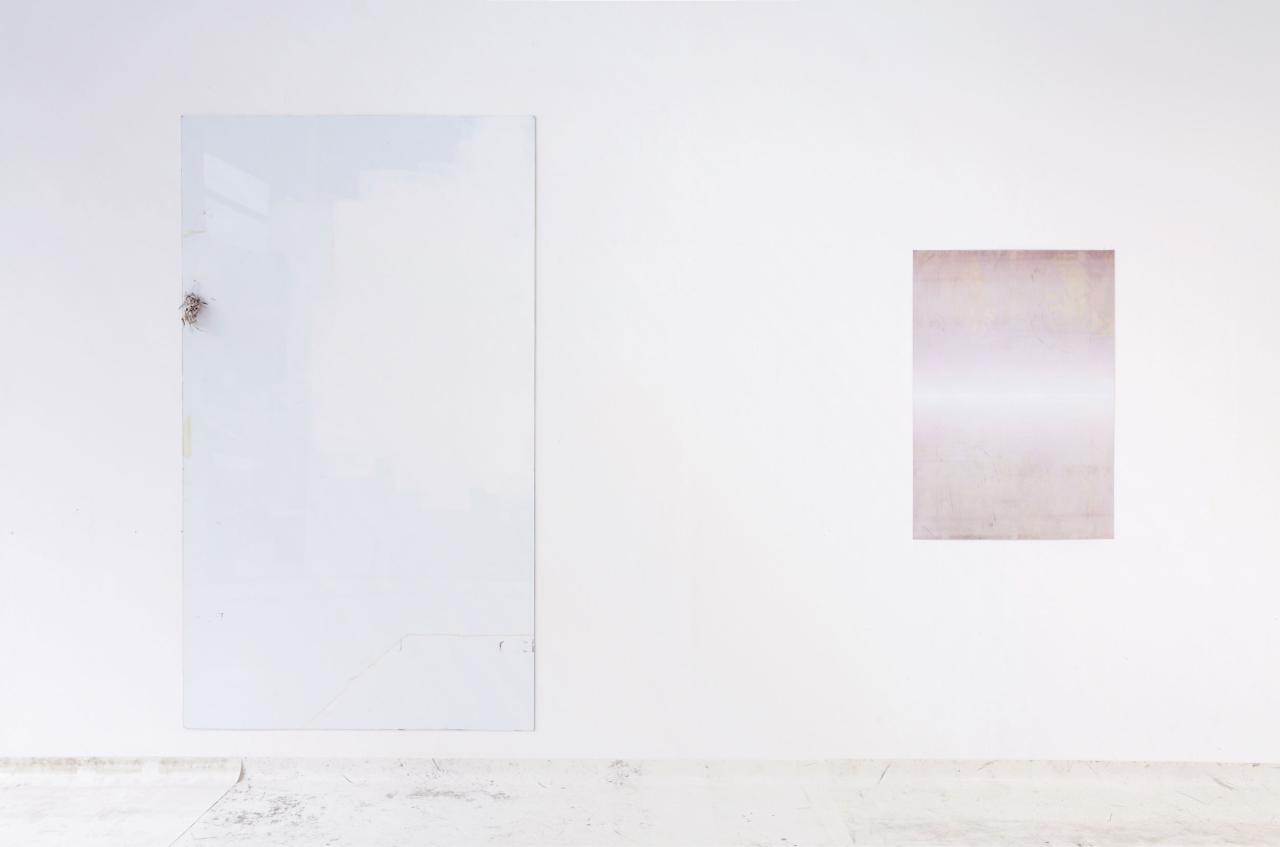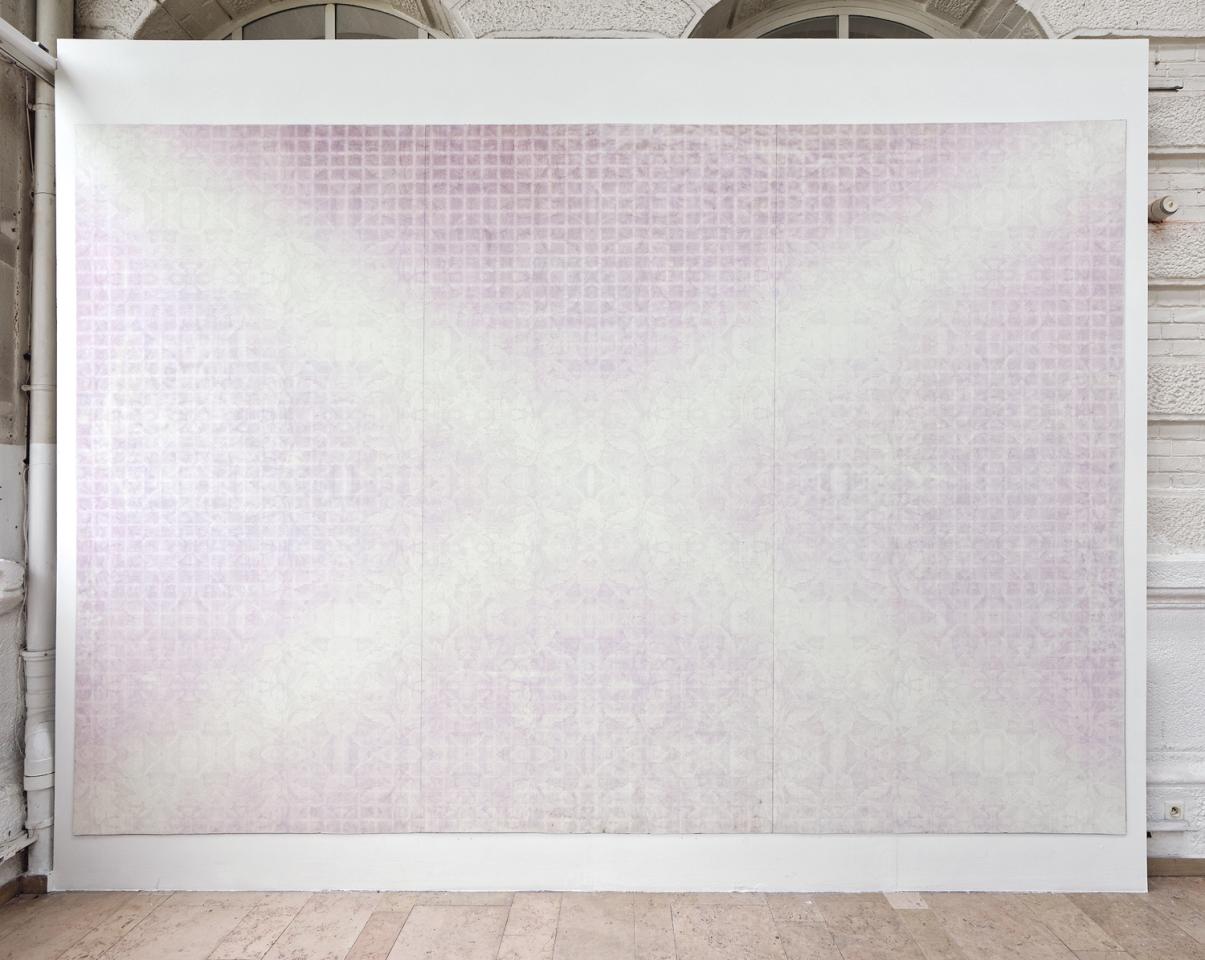Sébastien Maloberti
Born in 1976
Lives and works in Clermont-Ferrand



Painting and UV printing on Dibond, 450 x 300cm
“Sébastien Maloberti’s work invites us to reconsider the way we envision our relationship to images in a world where they require maximum clarity for a maximum return on investment. In contrast, his “images” affirm their transparency, evanescence and inconspicuousness. They have no focal point and are easily forgettable: they would produce no effect whatsoever if they were to be used as subliminal images. Despite this, one cannot remain indifferent to them as works of art, for it is precisely their evanescent nature that draws our attention and prompts a second interpretation/analysis that is more thorough than the first (and often passive) one, and which will give insight into what they contain and convey.
The works mentioned here are his latest – a series of UV prints on very thin sheets of wood, made from found and retouched images, the semantic origin of which (or subject, if any) evaporates and evades the eye. (…) Sébastien Maloberti’s works are more intimately related to blindness than to the precision of the eye as it scrutinises and reveals contents. This is shown in the significant presence of halos or beams of light, of luminous flashes bursting out from the void and weakening our visual acuity. (…)
The colours he uses also seem indefinable, evading us and merging into a nondescript greyish white, the lightest of blues, the pinkest of reds, all of which tend toward white, which we all know is not a colour but, as Newton theorised, “the colour obtained by compounding all the different colours of light”. These colours cloak his “figurative” subjects in almost opaque veils, revealing only the accidental jags in the wood. We think we see flames, but they are in fact the blown-up and therefore unrecognisable details of waves. As shown in Michelangelo Antonioni’s Blow-Up, enlarging does not necessarily bring clarification.” […]
Excerpt from Benoît Lamy de la Chapelle’s text, 2016
Translated by Lucy Pons